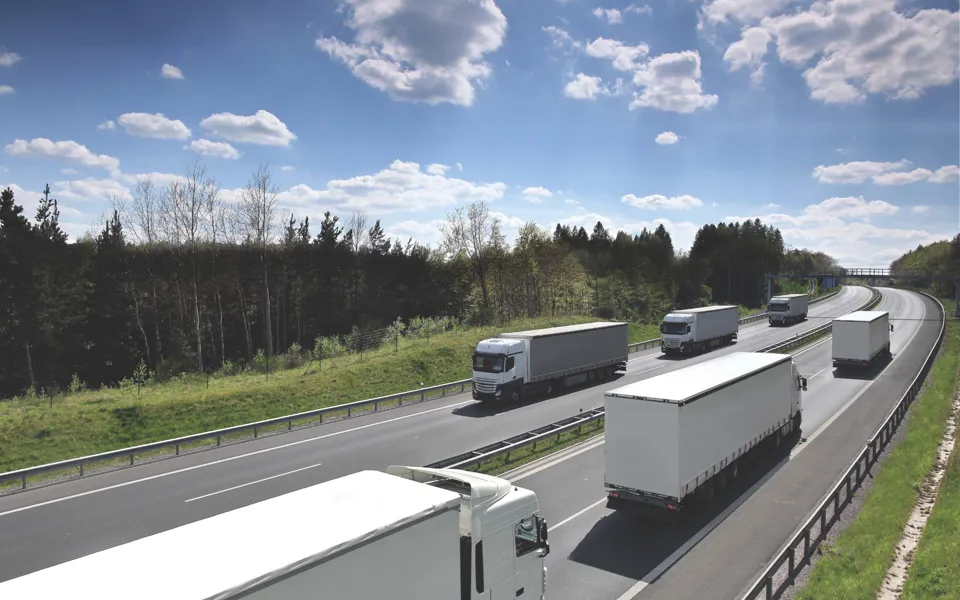
Improving efficiency in trucks with vehicle co-simulation, electronic horizon and connected control strategies
05 Feb 2020
Ricardo is using vehicle and traffic co-simulation, electronic Horizon technology and advanced connected control strategies to help on-road heavy-duty vehicle OEMs improve fuel economy and reduce tailpipe emissions and operating costs
On-road heavy-duty truck manufacturers are facing a significant challenge to reduce tailpipe CO2 emissions and improve efficiency in order to meet global emissions targets. In addition, there is also an expectation to meet the operating cost and performance expectations of fleet operators. Improving fuel economy is a key aspect to not only reducing operating costs and improving efficiency of freight traffic, but also to lowering tailpipe emissions.
As part of the Horizon 2020 IMPERIUM (IMplementation of Powertrain Control for Economic and Clean Real driving emIssion and fuel ConsUMption) project, Ricardo and its consortium partners identified and explored opportunities for powertrain optimisation through hardware and control system advances. The aim was to achieve a fuel consumption reduction whilst keeping the vehicle within the legal limits for pollutant emissions.
Vehicles of all varieties are becoming increasingly connected and the applications for these technologies to improve vehicle performance are growing. Some of these technologies, such as dynamic electronic horizon, feed data about the road ahead to the vehicle in real-time including information about the amount of traffic, driving conditions and disruption.
The ability to for the vehicle to be able to know what is around the corner enables a wealth of new opportunities for online optimisation of performance. For example, a fully loaded truck travelling at 80km per hour can coast out to a stop in neutral on a flat road for about 4km which saves almost a litre of diesel in a single event. The challenge is knowing when to take advantage of this. If the vehicle had information about the road ahead which indicated that the truck would likely have to come to a stop, at a traffic jam for instance, then the vehicle’s operation can be optimised ahead of the incident in order to bring the best fuel consumption benefit.
There are many systems on a truck which could potentially benefit from this kind of connected control but interactions with traffic and the environment are complex and the resultant benefit may not be as expected if the wrong hardware or software decisions are made early in the design process. As such, design concepts need to be screened and developed against real-world situations to ensure that development resource is best allocated, and the best benefit can be achieved.
To that end, Ricardo has developed a virtual model environment which simulates real-world traffic flow, road networks and environmental conditions. This toolchain integrates with other toolchains within our Integrated Model Based Development (IMBD) approach, allowing us to run simulated vehicle systems models within this environment so that we can optimise the total vehicle system accordingly.
The traditional approach to vehicle simulation and development considers the vehicle in isolation, but Ricardo’s approach of extending the simulation to include these real-world factors allows us to quickly evaluate and develop advanced control systems, enabling connected control to optimise for real-world performance.
Informing sizing hybrid system sizing decisions
This integrated real-world modelling approach can be applied to inform early design decisions. In this example multiple dynamic traffic scenarios, from no traffic to heavy traffic (80 percent time increase) were studied in-the-loop over a 100km journey. A conventional ICE vehicle was compared to a P2 hybrid vehicle. Scenarios where the vehicles were using connected predictive control and no predictive control were explored.
It was found that connected predictive control reduces the fuel usage but the sensitivity to traffic remains unchanged for the conventional powertrain. On the other hand, hybridisation reduces fuel usage and its sensitivity to traffic.
Using this data from this simulation it can be concluded that combining hybridisation with connected predictive control leads to a further benefit for real-world fuel economy. This information can be used to make hybrid system sizing decisions to be more informed early in the design process.
Predictive energy management with dynamic electronic horizon
Simulations using the integrated toolchain have predicted that integrating real-time connected control strategies could bring between a 5 and 10 percent fuel consumption reduction as well as reduced running costs, improved emissions performance and improved drivability and comfort. There is a potential to extend these technologies to a wide range of vehicles and architectures including passenger car and off-highway vehicles.
This project has received funding from the European Union’s Horizon 2020 research and innovation programme under grant agreement no. 713783 and from the Swiss State Secretariat for Education, Research and Innovation (SERI) under contract no.16.0063 for the Swiss consortium members.





 Follow Ricardo plc for regular updates
Follow Ricardo plc for regular updates



